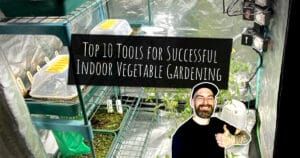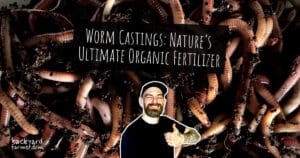Table of contents
Introduction
Radishes are one of the quickest and easiest vegetables to grow, making them an excellent choice for gardeners of all skill levels. These fast-growing crops mature in as little as four weeks and add a crisp, peppery flavor to salads and dishes.
For beginners, radishes provide an ideal starting point, while seasoned gardeners will appreciate their reliability and rewarding harvests. Whether you’re working with a small backyard, balcony containers, or a larger garden plot, radishes adapt beautifully to various setups.
What You Will Learn
In this guide, you’ll discover:
- How to grow radishes successfully in different settings.
- Practical tips for selecting the best radish varieties and managing their care.
- Solutions to common problems and guidance on harvesting for peak flavor and texture.
Why You Can Trust Me
As a professional gardener with over a decade of experience growing my own vegetables, I’ve cultivated countless radishes in various conditions. My hands-on experience has equipped me to tackle challenges like pest control, optimizing soil conditions, and achieving consistent, high-quality harvests.
This guide combines practical advice and proven techniques to help you grow radishes confidently, whether you’re starting your first garden or refining your gardening skills. Let’s dig in!
Radishes are one of the easiest and most rewarding vegetables to grow, but if you’re looking to expand your garden, check out our guide on What Vegetables Are Good to Grow? for more inspiration.
Why Grow Radishes?
Radishes are more than just a quick and easy crop to grow—they are packed with health benefits that make them an excellent addition to your diet. Whether you’re new to gardening or a seasoned grower, here’s why you should consider growing and eating radishes:
Nutrient-Rich
- Radishes are low in calories but high in essential nutrients. They provide:
- Vitamin C: Supports immune health and promotes glowing skin.
- Folate: Vital for cell growth and repair.
- Potassium: Helps regulate blood pressure and supports heart health.
- Pro Tip: Add radishes to your meals to increase nutrient density without adding extra calories.
High in Antioxidants
- Radishes are rich in antioxidants like anthocyanins, which combat oxidative stress and reduce inflammation. These powerful compounds may help lower the risk of chronic diseases.
Digestive Health
- Radishes are full of fiber, which supports healthy digestion and helps prevent constipation. Additionally, they contain compounds that stimulate bile production, aiding in fat digestion.
Detoxifying Properties
- The sulfur compounds in radishes assist in detoxifying the liver and kidneys by flushing toxins from the body. Their natural diuretic properties also help reduce water retention and support overall health.
Blood Sugar Control
- Radishes have a low glycemic index, which means they won’t cause blood sugar spikes. They’re an excellent choice for individuals managing diabetes or seeking to maintain steady energy levels.
Skin and Hair Health
- With their high water content and essential nutrients, radishes promote hydration and support healthy skin and hair. Vitamin C and zinc in radishes also contribute to collagen production, enhancing skin elasticity and strength.
Growing radishes not only provides a fresh and rewarding gardening experience but also delivers a wealth of health benefits. By including radishes in your meals, you’ll enjoy their crisp texture, peppery flavor, and significant nutritional boost.
For more tips on incorporating fresh produce into your meals, explore this guide on creative ways to use fresh vegetables to make the most of your harvest.
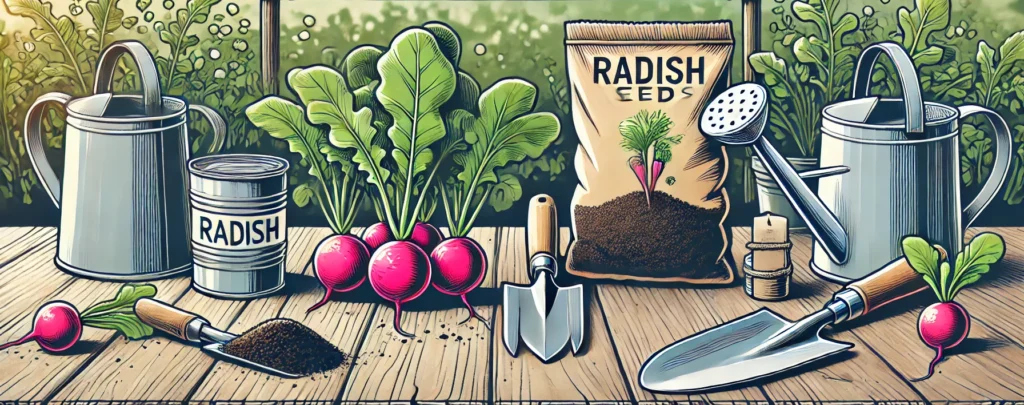
What You Will Need
To grow radishes successfully, you’ll need a few essential materials and tools. Follow these steps to ensure you’re fully prepared:
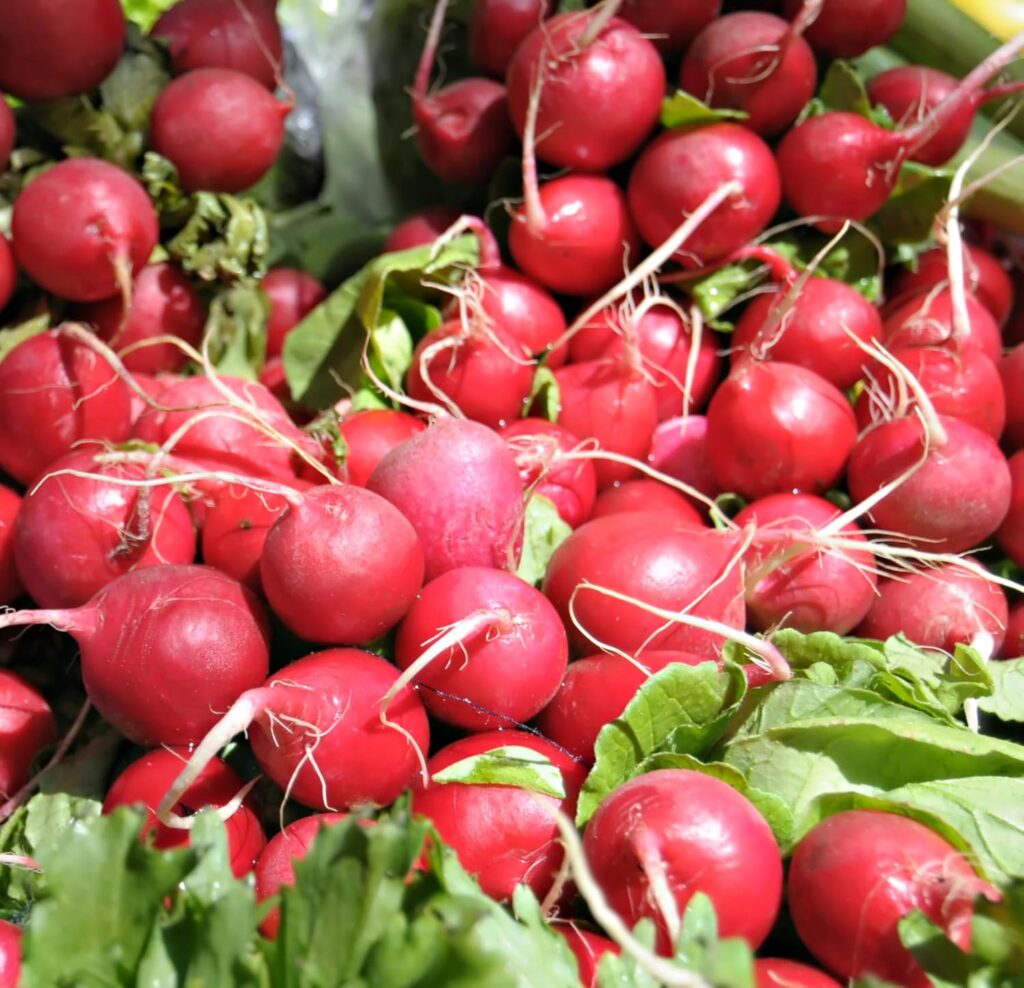
1. Seeds
Start by selecting popular varieties such as:
- Radish ‘Scarlet Globe’: A classic round red radish with a crisp texture and mildly spicy flavor.
- Radish ‘Felicia’: A striking purple radish known for its sweet and crunchy taste.
- Radish ‘French Breakfast 3’: An elongated radish with a white tip, offering a slightly spicy flavor.

2. Soil
- Choose rich, moist, and well-draining soil with a pH of 6.5–7 like RocketGro from Suttons. This ensures your radishes grow healthily and develop strong roots.
- Enrich the soil with compost or organic fertilizer to provide essential nutrients. Loamy soil works best for optimal root development.
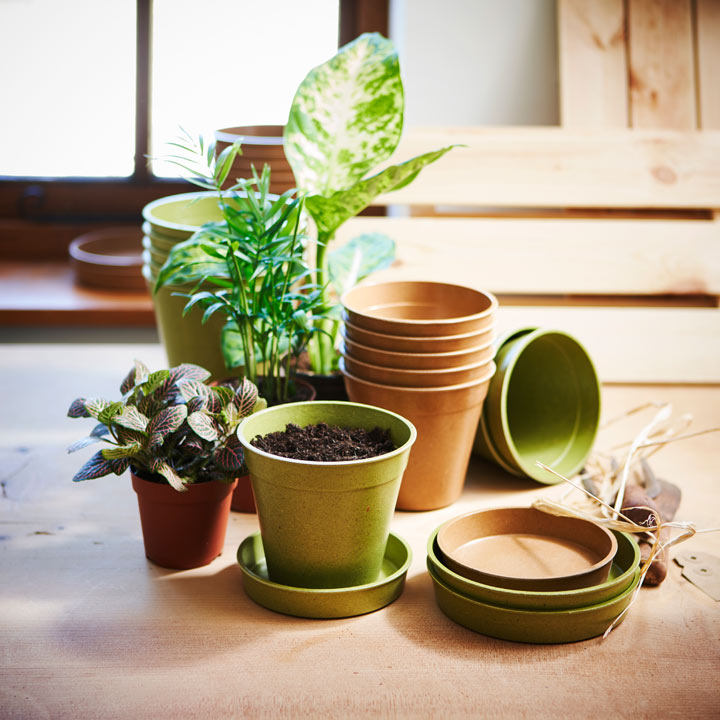
3. Containers (Optional)
- If you’re short on garden space, consider using containers. Radishes grow exceptionally well in pots and planters like these Bamboo and Rice Pots from Suttons.
- Make sure the container is at least 6 inches deep. This depth allows proper root development and makes it easy to grow radishes on balconies or patios.
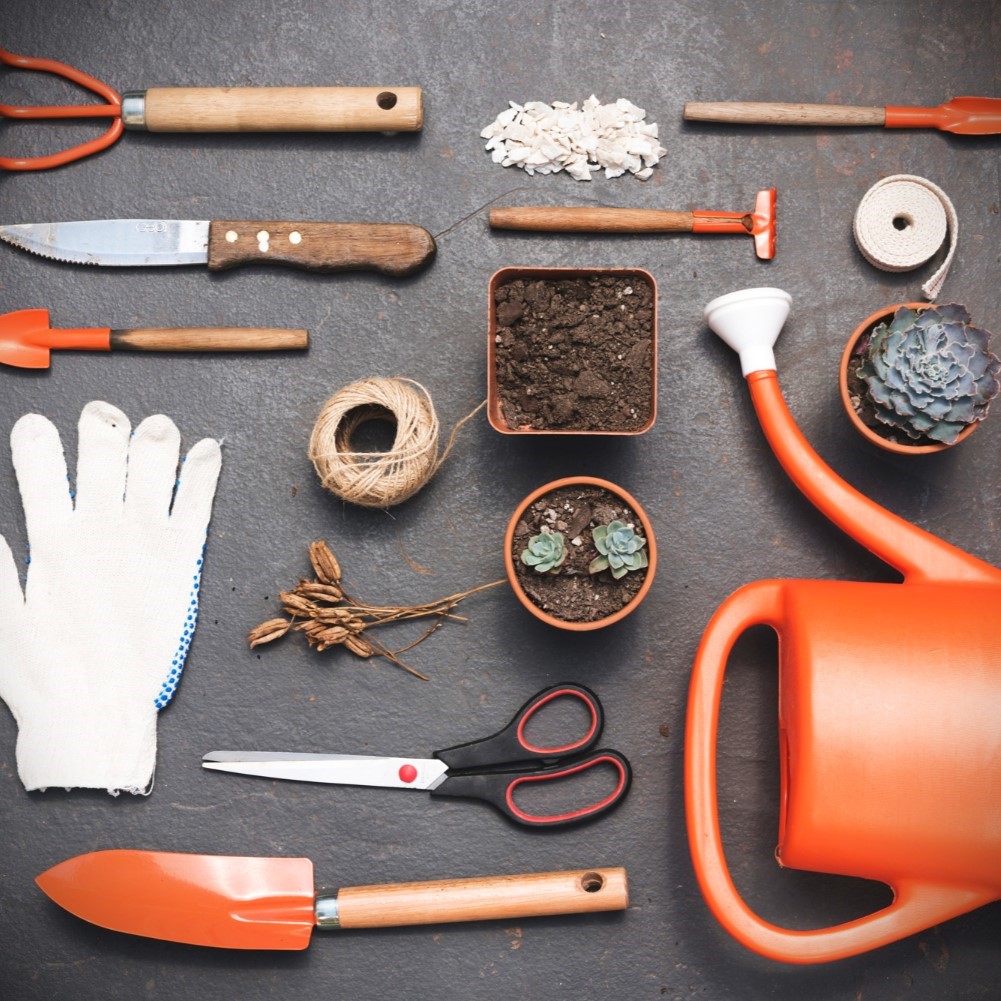
4. Tools
Gather these tools to make planting more efficient, check out Suttons gardening tools here:
- Trowel: For loosening soil and planting seeds.
- Watering Can: To keep soil consistently moist without waterlogging.
- Garden Marker: To label rows or varieties, ensuring organized planting and easier tracking.
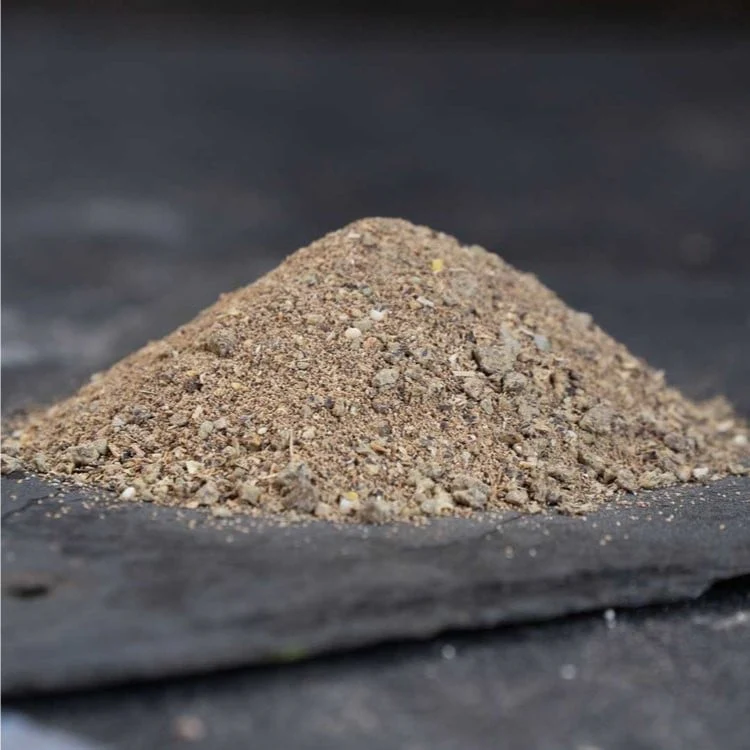
5. Fertilizer
- Use organic compost or a balanced, all-purpose fertilizer to encourage strong, healthy roots.
- Avoid over-fertilizing, as excess nutrients can lead to leafy growth at the expense of root development. A light application works best for radishes.
How to Grow Radishes: Step-by-Step Guide
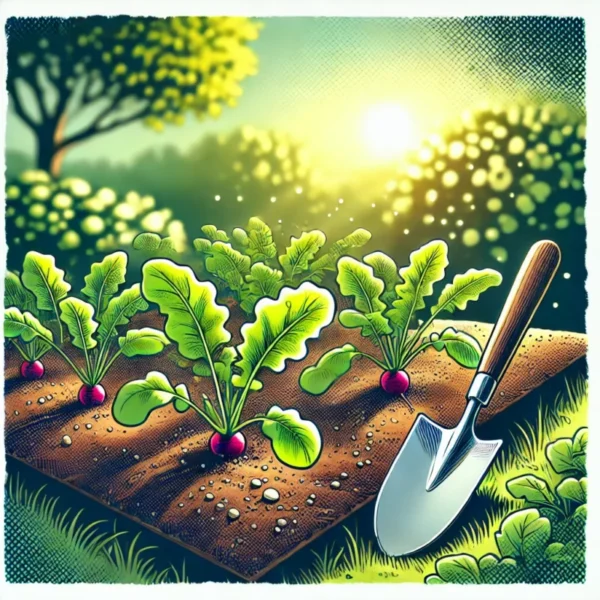
1: Choose the Right Spot
Description: Radishes thrive in sunny locations with well-draining, light, loamy soil. This ensures the roots develop properly and grow to their full potential.
Pro Tip: If your soil is compacted or clay-heavy, use raised beds. These improve drainage and create a better growing environment for your radishes.
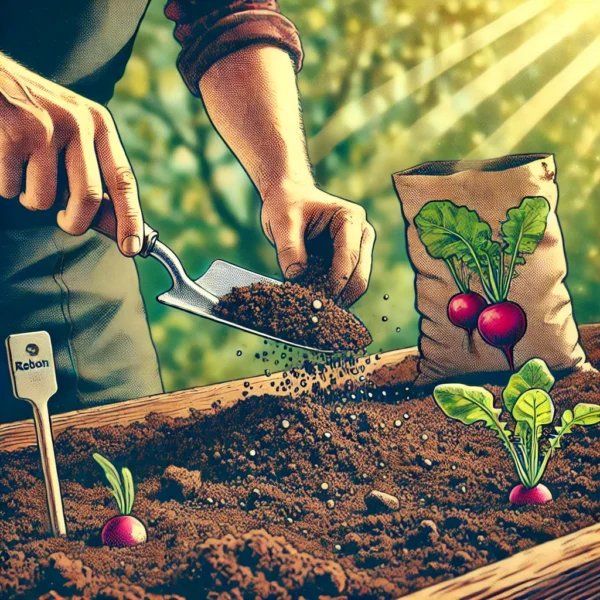
2: Prepare the Soil
Description: Loosen the soil to a depth of at least 6 inches. Remove stones or debris that could obstruct root growth. Aim for a pH level between 6.5 and 7 to create ideal growing conditions.
Pro Tip: Enrich the soil with compost or organic fertilizer. This step provides the nutrients radishes need for fast and healthy growth.
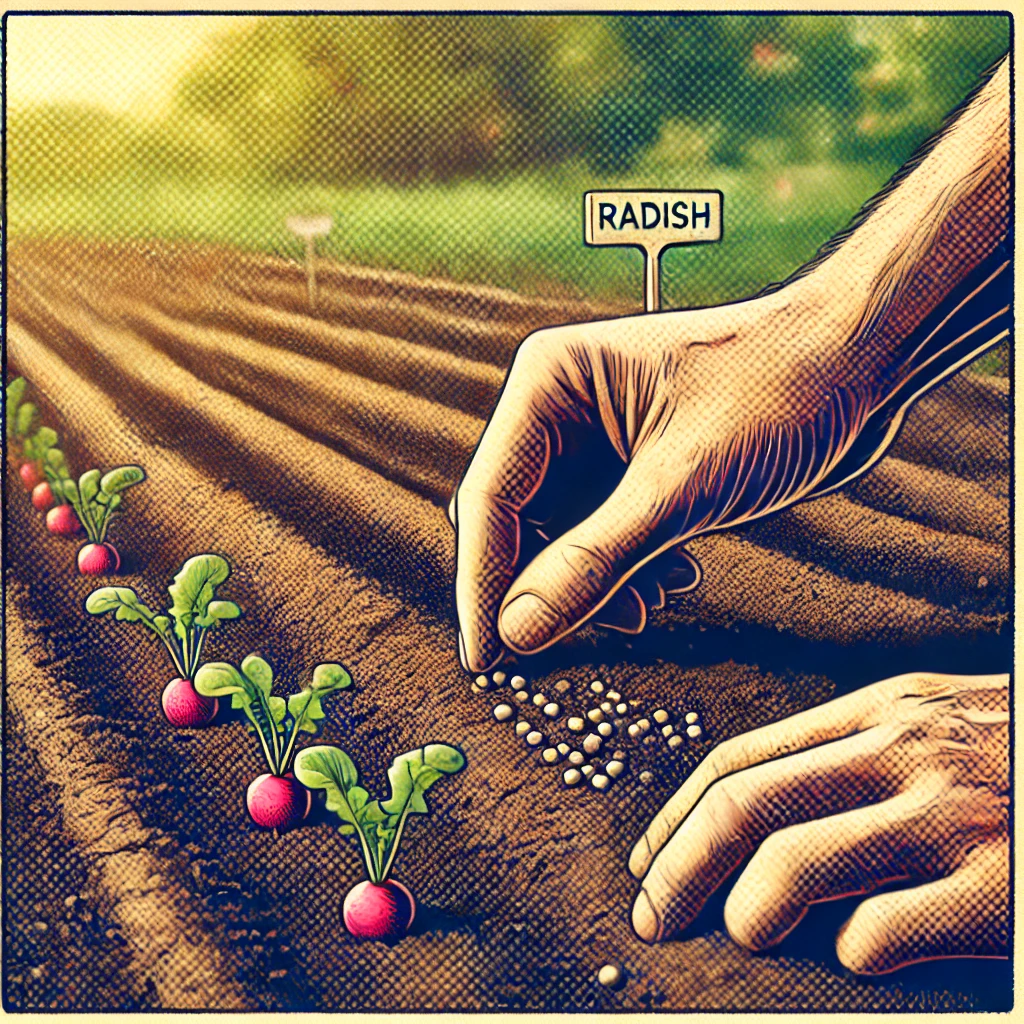
3: Plant the Seeds
Description: Sow radish seeds directly into the soil, spacing them about 4 inches apart in neat rows. After planting, cover the seeds with a thin layer of soil and water gently to settle the soil.
Pro Tip: For a continuous harvest, stagger your planting every two weeks during the growing season. This ensures a steady supply of fresh radishes.

4: Care for Your Radishes
Description: Keep the soil consistently moist, but avoid overwatering. Thin the seedlings to maintain a spacing of 4 inches between plants. Proper spacing prevents overcrowding and promotes healthy growth.
Pro Tip: Watch for common pests like aphids or flea beetles. Protect your crop with natural deterrents such as neem oil or companion planting.
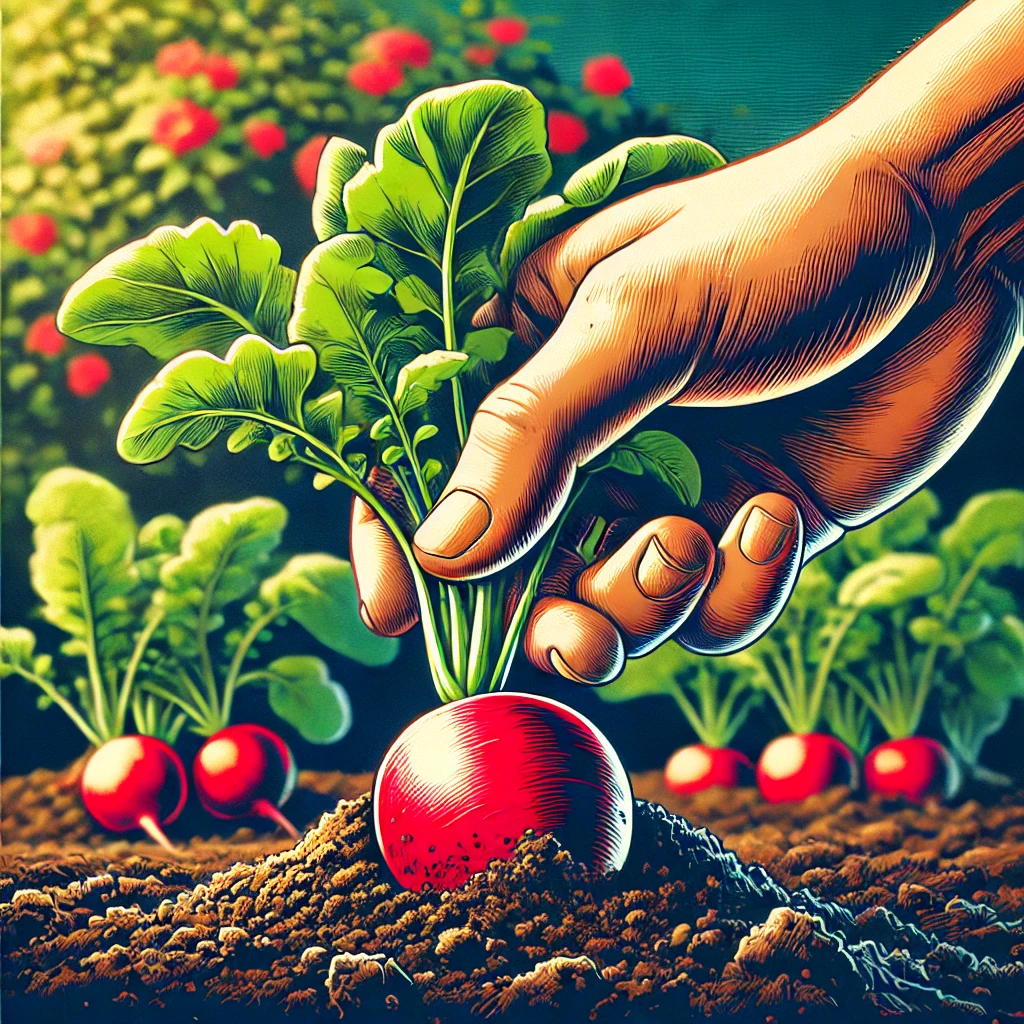
5: Harvest Your Radishes
Description: Check your radishes after about 4 weeks. When the roots reach approximately 1 inch in diameter, they are ready to harvest. Gently pull them out of the soil to avoid damaging the roots.
Pro Tip: Harvest radishes promptly to prevent them from becoming woody or bitter. Freshly harvested radishes have the best flavor and texture.
Variety Recommendations
Choosing the right radish variety enhances your growing experience by ensuring faster growth, unique flavors, and visual appeal. Explore these popular options to find the perfect fit for your garden:
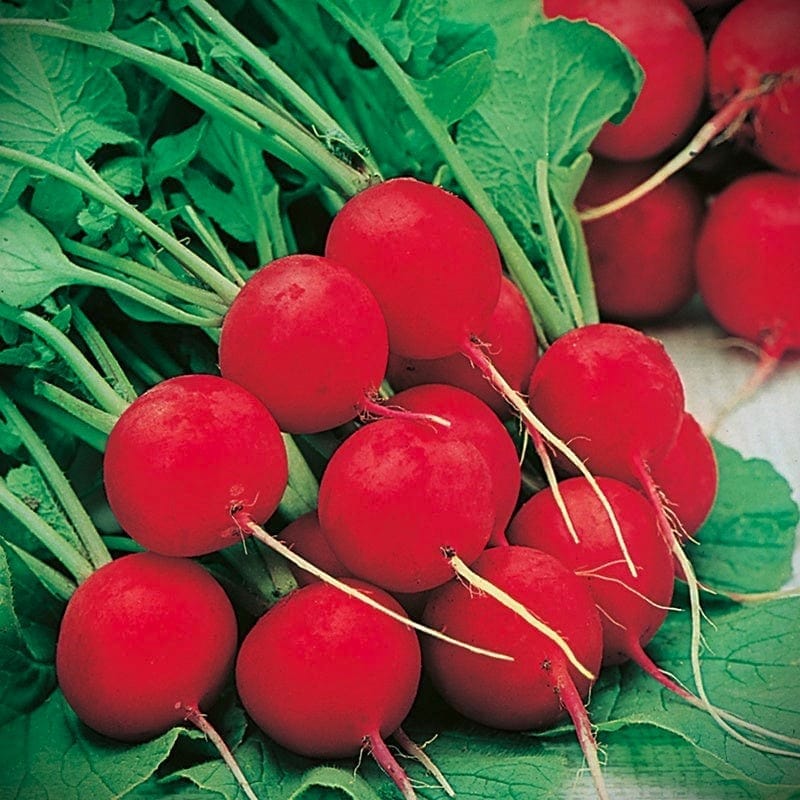
1. Scarlet Globe
Description: This classic round, red radish offers a crisp, mild flavor. It’s one of the fastest-growing varieties, maturing in just 3 to 4 weeks.
Best For: Beginners and gardeners seeking a reliable, fast-growing option.
Planting Tip: Sow in well-drained soil and harvest promptly to enjoy their fresh, mild flavor.
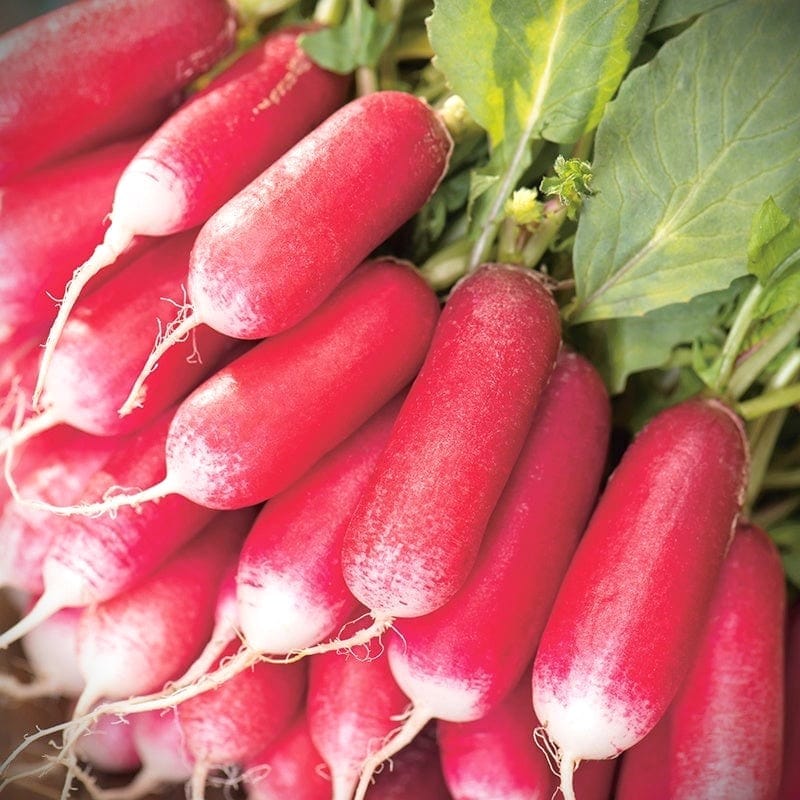
2. French Breakfast
Description: With its elongated shape, white tip, and slightly spicy taste, this radish adds uniqueness to any dish. Its appearance makes it a favorite for salads and garnishes.
Best For: Enhancing the visual appeal of dishes and gardens.
Planting Tip: This variety thrives in cooler weather. Water consistently to promote even growth and prevent bolting.
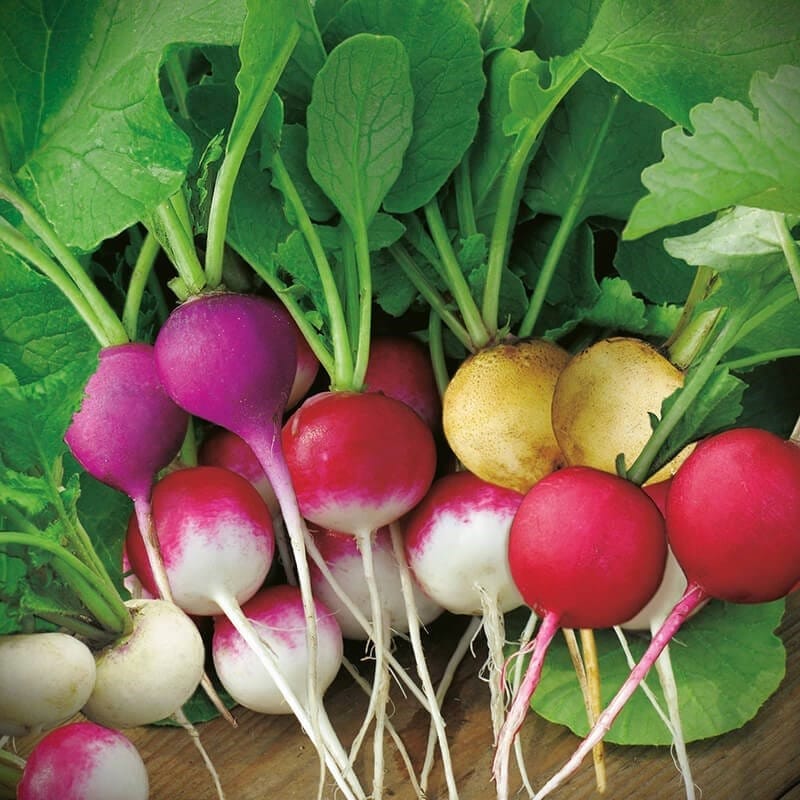
3. Rainbow Blend
Description: This colorful blend includes red, white, purple, and pink radishes, adding variety and fun to your garden and table.
Best For: Families and gardeners looking for a diverse and playful harvest.
Planting Tip: Stagger planting to enjoy continuous bursts of color and variety throughout the season.

4. Daikon
Description: Larger and white, Daikon radishes offer a mild, slightly sweet flavor. They take longer to mature, typically around 60 days, making them ideal for cooler seasons.
Best For: Pickling, soups, and planting during winter months.
Planting Tip: Plant in late summer for a dependable winter harvest. Ensure consistent soil moisture for the best results.
Expand your gardening skills by learning how to grow another rewarding crop—check out our guide on How to Grow Potatoes for tips and tricks.
Frequently Asked Questions (FAQ)
Radish growing FAQs address common questions and challenges gardeners may encounter when cultivating this quick-growing crop. From planting tips to pest solutions, these answers will help you grow radishes successfully.
How long does it take for radishes to grow?
- Most radish varieties mature within 3 to 4 weeks. For larger varieties like Daikon, expect up to 60 days.
Can I grow radishes in containers?
- Yes, radishes grow well in containers. Ensure the container is at least 6 inches deep so the roots have enough room to develop properly.
Why are my radishes bolting?
- Bolting occurs when radishes flower prematurely. This is often caused by overcrowding, inconsistent watering, or high temperatures. To prevent bolting, thin seedlings to avoid overcrowding and maintain consistent soil moisture.
Are radish leaves edible?
- Yes, radish leaves are edible and highly nutritious. They are rich in vitamins A, C, and K. You can use them in salads, soups, or sauté them as a healthy side dish.
What pests should I watch out for?
- Common radish pests include aphids, flea beetles, and root maggots. Manage these pests using natural deterrents like neem oil or companion planting with pest-repelling plants such as marigolds.
Can radishes grow in partial shade?
- While radishes thrive in full sun, they can grow in partial shade. However, keep in mind that they may take longer to mature, and their root development could be less robust.
What are the signs that radishes are ready to harvest?
- Radishes are ready to harvest when their roots are about 1 inch in diameter. Gently pull them from the soil to check their size and maturity.
Can I replant radishes in the same spot?
- It’s better to rotate crops to avoid soil depletion and minimize the risk of pests and diseases. Avoid planting radishes in the same location for consecutive seasons.
This FAQ section tackles common concerns and offers practical solutions to help you grow radishes confidently. If you have additional questions, don’t hesitate to experiment or seek further guidance!
Common Radish Problems and Solutions
Growing radishes is generally straightforward, but certain challenges can arise. Here are the most common problems and practical ways to address them:
Bolting (Premature Flowering)
- Cause: High temperatures, overcrowding, or inconsistent watering often lead to bolting.
- Solution: Thin seedlings to provide proper spacing, maintain consistent soil moisture, and plant during cooler weather to minimize heat stress.
Small or Undeveloped Roots
- Cause: Overcrowding, insufficient sunlight, or excessive nitrogen in the soil can stunt root growth.
- Solution: Space radishes at least 4 inches apart, grow them in a sunny location, and use a balanced fertilizer rather than one high in nitrogen.
Cracked Roots
- Cause: Irregular watering causes sudden changes in soil moisture, leading to cracked roots.
- Solution: Water consistently to maintain even soil moisture and avoid cycles of drought followed by heavy watering.
Pests (Aphids, Flea Beetles, and Root Maggots)
- Cause: These common radish pests are attracted to young crops and roots.
- Solution: Use natural remedies like neem oil, introduce beneficial insects such as ladybugs, and plant companion crops like marigolds to repel pests.
Fungal Diseases (Damping Off or Root Rot)
- Cause: Overwatering and poor soil drainage often lead to fungal issues.
- Solution: Avoid overwatering, improve soil drainage, and plant radishes in well-aerated soil. Crop rotation can also prevent diseases from building up in the soil.
Bitter or Woody Roots
- Cause: Leaving radishes in the ground too long leads to bitterness or woody textures.
- Solution: Harvest radishes promptly when they reach the recommended size, usually within 3-4 weeks.
Conclusion
Growing radishes is a rewarding experience for gardeners at any skill level. These fast-growing vegetables are ideal for both beginners and seasoned growers. With their:
- Quick Growth: Radishes mature in just a few weeks, offering rapid results and satisfaction.
- Low Maintenance: They thrive with minimal effort, needing only consistent care and proper spacing.
- Versatility: Radishes bring flavor and nutrition to meals, whether used in salads, garnishes, or pickling.
By following this guide, you have everything you need to grow healthy and delicious radishes with confidence. Whether you’re planting in containers, raised beds, or traditional garden plots, these straightforward tips will ensure success.
Key Takeaways
- Choose the Right Variety: Select a variety that suits your needs, such as Cherry Belle for quick growth or Daikon for cooler seasons.
- Care Consistently: Provide proper spacing, regular watering, and natural pest management for optimal growth.
- Harvest on Time: Pick radishes at the right size to ensure the best flavor and texture, avoiding over-maturity.
Now it’s time to roll up your sleeves and start planting! These tips will help you enjoy fresh, homegrown radishes straight from your garden.
Happy Gardening!



